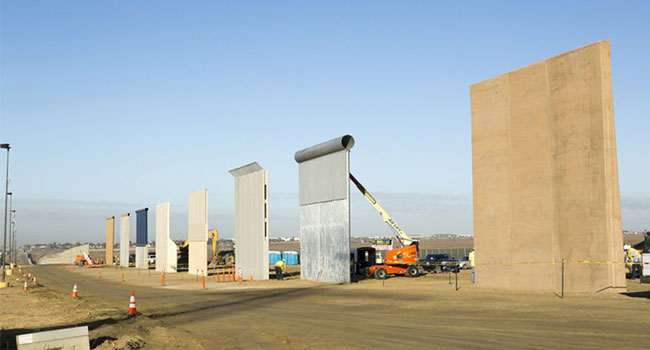
Successful Security Measures Cut to Make Room for Border Wall
The Trump administration is cutting or delaying funding for proven security measures in lieu of funding the Border Wall.
- By Sydny Shepard
- Jan 10, 2018
President Donald Trump promised the American people a wall on the border of the United States and Mexico and that is just what the American people are going to get. The most difficult part of this campaign promise, however, is funding.
Under a spending plan submitted last week to Congress, the wall, which would span nearly 900 miles across the southern border, could cost $18 billion over the next 10 years. The cost is more than half of the $33 billion spending blueprint for border security over the next decade.
The New York Times reported that the Trump administration would cut or delay funding for proven security measures that officials and experts deem more effective than building a wall, such as custom agents, radar technology, border surveillance, canine units and patrol boats, in its upcoming spending plan to curb illegal immigration.
The reallocation of funds help to fund the border wall, but eliminate critical funding for border security programs or shifts money from them, threatening to leave holes in the country's border security program. For example, in a document viewed by The New York Times, the spending budget cuts money included for a remote video surveillance system in the Rio Grande Valley in South Texas, an area known for high numbers of border crossings and drug smuggling. The system is composed of infrared cameras mounted on poles, towers and buildings.
The document notes that the surveillance system is important, but said its funding requests were lowered "to offset the costs of presidential priorities not funding in the D.H.S. request."
The most alarming thing in the proposed budget is the absence of funds to support hiring new customs officers. Experts told The New York Times that not hiring any additional agents could potentially have the most impact on border security, the agents form the most crucial line of defense against smugglers and terrorist threats.
Security experts believe focusing on a wall rather than security measures that have proven to be successful ignores the constantly evolving nature of threats at the border, including terrorism, immigration and drug trafficking.
“A wall is the single most expensive thing you can do in terms of trying to secure the border, and not necessarily the most effective on its own,” said Doris Meissner, who was the top immigration official during the Clinton administration, in the NYT article. “If you want to be strategic about it, you want to invest in technologies and programs that can stop threats well before they can actually get to the border.”
About the Author
Sydny Shepard is the Executive Editor of Campus Security & Life Safety.